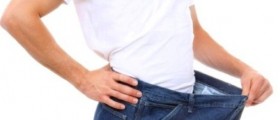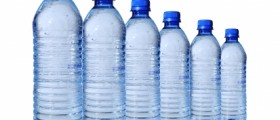There are many health dangers associated with excessive usage of the sauna, some of them even life threatening.
Sauna
The word “sauna” actually means “unusually hot” and it refers to a small room where people experience dry and wet heat sessions. Saunas are becoming more and more popular as one of the effective means to deal with excessive weight. Moderate use of sauna may be extremely relaxing and healthy but there are also many disadvantages involved. Wrong types of saunas or using the sauna incorrectly may cause serious damage to the health. These are some safety precautions to consider before going to the sauna.
Sauna Suits
Sauna suits are made of nylon and rubberized vinyl or plastic, to emulate the benefits of real sauna. While, wearing the sauna suit, all of the body heat gets trapped inside and provokes excessive sweating. Sweating and removing the excess water from the body helps the person to lose weight and it is most commonly used by boxers and athletes. Heating and perspiration helps to detoxify the body and get rid of the impurities. If used properly it increases the metabolic rate and improves blood circulation, resulting in major health benefits.

Sauna Suit Dangers
There are some disadvantages associated with sauna suits. However, most of them may be prevented by the proper use of sauna suit. The most common side-effect of sauna suits usage is dehydration of the body. Dehydration is a dangerous health condition and in this case it occurs because the suits trap the heat and sweat inside, and the body easily gets overheated. Dehydration may be fatal for some people because it can lead to heart strokes. Heart strokes take place when the body core temperature significantly increases.
The other severe side effect of wearing sauna-suits is the loss of electrolytes. This may bring a significant damage to the kidneys and in some cases lead to the kidney failure.
Other reported dangers include heart attacks, fainting, unconsciousness, weakness and loss of energy.
- Ten moderately trained participants (6 males and 4 females; mean ± standard deviation age: 25 ± 3 years, mass: 69.44 ± 7.50 kg, stature: 175 ± 9 cm, body surface area 1.84 ± 0.13 m2, and body fat: 19.7 ± 7.6%) volunteered, after providing written informed consent.
- Participants had not exercised in hot conditions (>25°C) for >3 months, nor were they regular sauna, steam or hot bath users. Each participant abstained from strenuous exercise, caffeine and alcohol 24-hrs prior to each session.
- Food intake was restricted 2-hrs prior to exercise, normal diets were maintained throughout the study. Participants arrived euhydrated, as indicated by urine osmolality (Uosm)
- All female participants were taking oral contraceptive pills, beginning experimentation on day 2 of the pill phase, which occurred during the early-follicular phase (e.g. 3–5 days after the onset of menstruation) of their self-reported menstrual cycle, as verified by a questionnaire. The study was conducted in accordance with the Institution's ethics and governance committee, and Declaration of Helsinki. Exercise was terminated if Tre ?39.7°C (zero incidence).
- A randomised, repeated-measures design was adopted, with each participant visiting the laboratory on four occasions, 72-hrs apart to minimise any acclimation effect from repeated heat exposures. During each visit, following instrumentation and 15-mins passive rest in temperate laboratory conditions, participants cycled for 30-mins, replicating the onset of a typical isothermic HA protocol, within four conditions; temperate (TEMP: 22°C, 45% RH), temperate whilst wearing an upper-body sauna suit (TEMPSUIT: 22°C, 45% RH), hot (HOT: 45°C, 20% RH) and hot whilst wearing an upper-body sauna suit (HOTSUIT: 45°C, 20% RH).
- Each trial was completed inside a controlled environmental chamber, (WatFlow, TISS, Hampshire, UK). Participants cycled (Monark, 620 Ergomedic, Vansbro, Sweden) at a power output prescribed relative to body mass (2 W.kg?1 for 15-mins, then 1 W.kg?1 for the following 15-mins, as opposed to intensities relative to maximal oxygen uptake (V?O2max), thus removing the requirement to undertake a V?O2max test. During the TEMPSUIT and HOTSUIT trials, each participant wore a commercially available, upper-body vinyl sauna suit (Everlast, London, UK), to restrict evaporative heat loss throughout the 30-mins of exercise. Fluid ingestion was not permitted during the trials.
- Tre demonstrated a difference between conditions (F = 14.5, P0.05).
- HR demonstrated a difference between conditions (F = 19.5, P
- TC demonstrated a difference between conditions (F = 10.4, P
Clarification
Sauna suits may bring significant health benefits to the user, but only if used wisely. It is important to understand that sauna suit shouldn’t be the preferred weight loss method. Healthy diet, a lot of physical exercise and balanced lifestyle are better and healthier solutions to lose weight.

















Your thoughts on this
Loading...